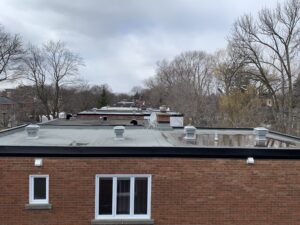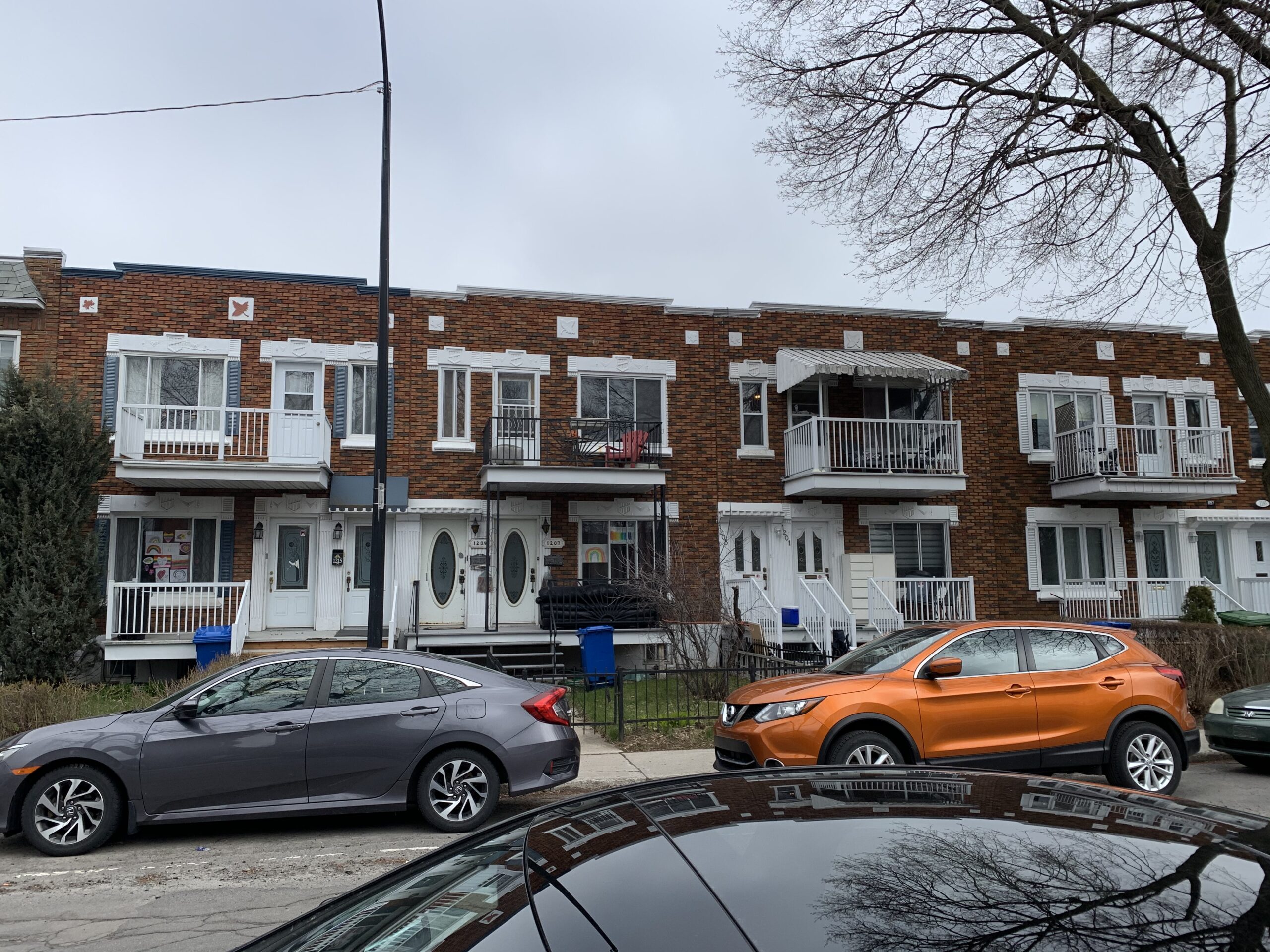Montreal has an unusual number of homes with flat or very low-slope roofs. This architectural feature is far less common in the rest of Canada. Although these structures make Montreal unique, these flat roofs can cause some major wildlife control headaches for homeowners. Skedaddle Humane Wildlife Control explores what animals like about flat roofs and how humane wildlife removal can help.
The Flat Roofs of Montreal
The first flat-roofed homes were built in Montreal around 1875. During this time, the industrial revolution was causing a housing boom. Thousands of workers needed to be housed quickly and relatively inexpensively. The solution was very simple: boxy duplexes and triplexes that could accommodate multiple working-class families.
Although practical and aesthetic considerations helped inspire the flat roofs, public safety was an even greater factor. Sloping roofs can become hazardous if sheets of ice slide off (an occurrence many Canadians have observed). This is especially significant in densely populated areas. Flat roofs are an effective solution to this issue, even today.

Wildlife and Flat Roofs
While flat roofs may help save the lives of passersby in the winter, they also inspire wildlife to take up residence. Many of these roofs have a small crawl space instead of a true attic. These spaces are too small for a human to easily enter and navigate, but they offer plenty of secluded areas for wildlife.
Furthermore, the crawl spaces are vented using gooseneck vents. These do an excellent job of improving airflow without exposing the space to the elements, but the vents can be inviting entryways for wildlife, especially raccoons and squirrels. Although the vents are typically protected by a thin, ¼-inch screen, wildlife can often break through the screens and make their way inside.
Flat roofs are easily navigated by wildlife and feature a warm, comfortable, and accessible crawl space that is free from human and pet activity. This is an invitation for wildlife to make themselves at home in the flat-roofed buildings of Montreal.

The Challenges of Humane Wildlife Removal with Flat Roofs
These architectural features introduce some new challenges for wildlife control. The most significant is that since they are mostly free from human activity, animals can go unnoticed both on roofs and in crawl spaces for an extended time. This means that wildlife can build nests and dens and otherwise settle in.
Another key challenge is that the “attic” spaces are too small for a person to navigate. They also rarely have entry points intended for humans. Therefore, locating and accessing nests can be extremely difficult. People are most likely to experience wildlife issues in their crawl spaces during baby season. The immobile young need to be reached and safely removed to solve the problem. The mothers will keep returning if their babies are still nesting in the roof. In many cases, removing these nests and dens means cutting a hole in the roof to gain access, but it is not easy to figure out exactly where to cut that hole from the outside.
“We cut through the roof precisely where the babies and internal damage is located,” says Chris Grabas, the manager of the Skedaddle Montreal location. “But that is very difficult to predict without the ability to physically see inside of the attic space. Sometimes, customers opt to risk wildlife damage and wait the 12-week period until the babies are fully-fledged, so we are able to install one-way doors and allow the now mobile babies to free themselves from the space.”
The one advantage of the flat roofs is that they are much easier to walk on than a sloped roof. So although the crawl space adds a lot of challenges, the roof itself is easier to work with.

How Skedaddle Approaches Wildlife Control
As our name implies, Skedaddle focuses on humane wildlife removal and control. We emphasize humane techniques not just because they are the right thing to do, but also because in our 30 years of business, we have found they are much more effective. Our approach works with wildlife behaviour rather than against it.
When we are called in for removal, we use a three-step process. This helps to ensure long-term results:
- Assess the problem and remove the wildlife.
- Clear and clean the areas affected by the wildlife infestation.
- Protect the structure and prevent further issues by sealing all possible entry points.
What Homeowners Can Do To Protect Their Flat Roofs
 Homeowners can help to protect their flat roofs by checking them periodically. They should look at any vents and inspect for damage that may indicate wildlife entry. Additionally, it is helpful to check inside crawl spaces if possible. Simply looking inside with a flashlight should be sufficient enough to notice any damage done by wildlife intruders.
Homeowners can help to protect their flat roofs by checking them periodically. They should look at any vents and inspect for damage that may indicate wildlife entry. Additionally, it is helpful to check inside crawl spaces if possible. Simply looking inside with a flashlight should be sufficient enough to notice any damage done by wildlife intruders.
We strongly advise against trying to address an infestation alone. Wildlife can be very dangerous, especially when nesting with young. Call in professionals to help. The Skedaddle Humane Wildlife Control team in Montreal has significant experience with flat-roofed buildings. Although there are additional challenges with these unique architectural features, our team’s knowledge and expertise help to address the issue promptly and effectively. Contact us today for humane wildlife removal services.



